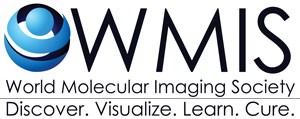
This category deals with imaging peripheral and central inflammatory reactions in different pathologies, targeting cellular and tissue markers of inflammation. This category also covers the dynamic non-invasive visualization of the immune response, using innovative imaging technologies, across multiple diseases and following therapeutic intervention, for purposes of tracking immune cells and assessing their interactions with the host and microenvironment. We encourage submissions where the immune system is the primary focus, rather than the disease itself, which might be a better-fit for other disease-specific categories (e.g. oncology track).
Probe & Targets
The design, chemical synthesis and characterization of imaging probes and theranostic agents as well as reporter genes used to label immune cells (in vitro and in vivo) and inflamed tissues will be addressed. All imaging modalities will be covered.
Preclinical Imaging
All applications where new imaging tools and probes targeting cellular and tissue markers of inflammation and/or activated immune cells are evaluated in animal models belong to this category. It also includes the preclinical testing of image-guided inflammatory/immunological therapies.
New Biology
In this category, research on inflammation and immune activation will be presented that mainly addresses new biological mechanisms and where imaging is rather a tool to gain the mechanistic insights. New approaches in bioengineering and new disease models will also be considered.
Translational and Human Studies
Research on inflammation and immune system disruptions in humans or (non-human) studies with demonstrated potential for clinical impact or immediate translation should be submitted to this category. It includes prospective and retrospective studies as well as studies on new pharmaceuticals at phase I-IV where imaging plays a significant role in the study.
